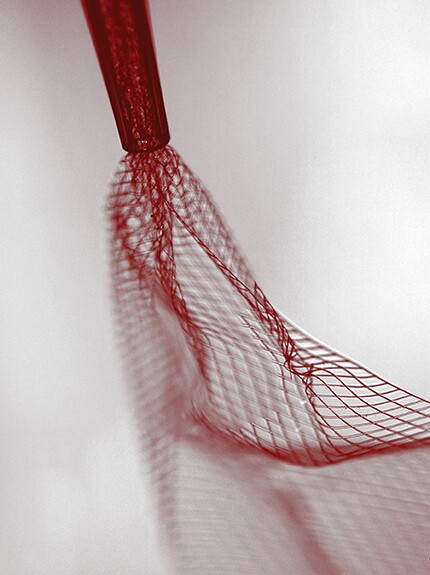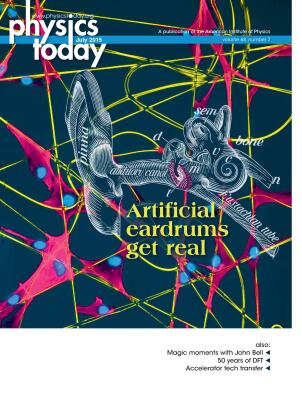Injectable electronics
DOI: 10.1063/PT.3.2857
Through their ability to conform and couple to nonplanar surfaces, flexible electronics are opening up a new realm of applications. The potential to monitor and control internal biological systems is particularly appealing, especially if it can be done with minimal invasiveness. Most current approaches rely on thin-film supporting substrates that, although flexible, limit a device’s ability to intimately interface with its surroundings. Charles Lieber and colleagues at Harvard University now demonstrate so-called mesh electronics that can be loaded into a syringe and injected into specific regions of manmade or biological cavities.
Shown here is one of the team’s polymer mesh structures being injected into an aqueous solution. The mesh is several centimeters long and 2 millimeters across, yet it emerges smoothly from the needle’s 95-micron-diameter opening. The polymer ribbons are 20 microns wide and less than 1 micron thick, and they meet at a 45° angle. Within the longitudinal ribbons are metallic wires that run the length of the mesh and connect sensors—such as strain gauges or pH meters—at one end to contact pads at the other. By withdrawing the syringe as the mesh is being injected, the researchers can accurately position the sensors in the desired target region and leave the contact pads in an accessible outside location. The released mesh will relax, unfurl, and interpenetrate the surrounding space. The team illustrated the technique’s versatility by monitoring mechanical strain in silicone gels and by mapping brain activity in anesthetized mice. (J. Liu et al., Nat. Nanotechol., doi:10.1038/nnano.2015.115

To submit candidate images for Back Scatter, visit http://contact.physicstoday.org
